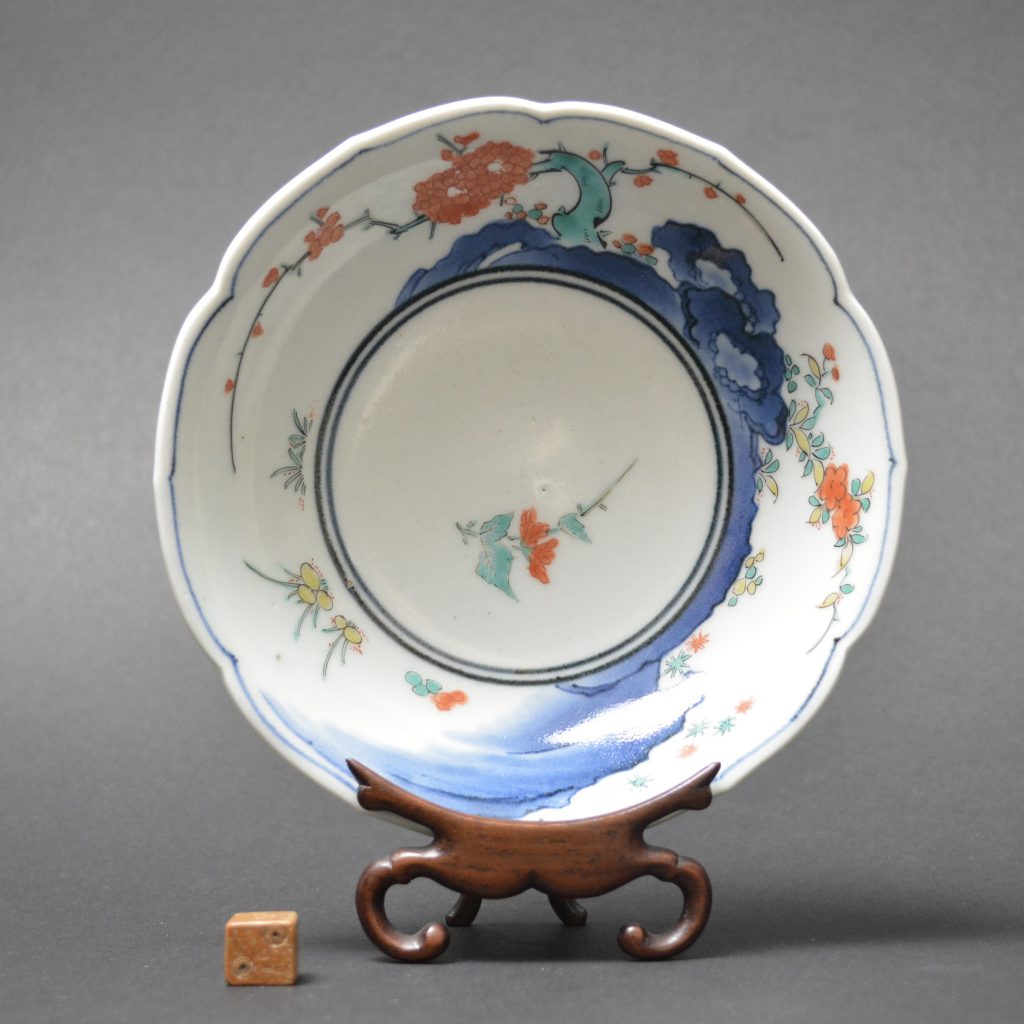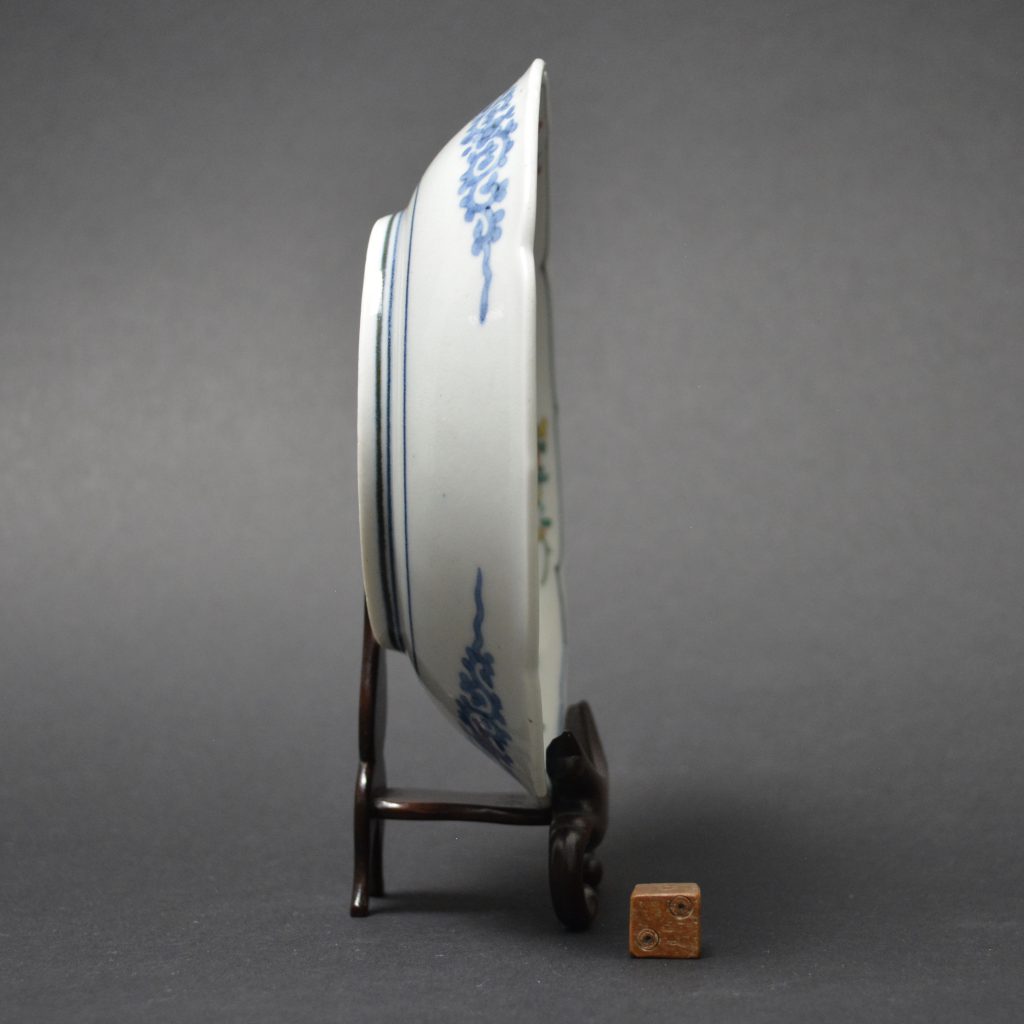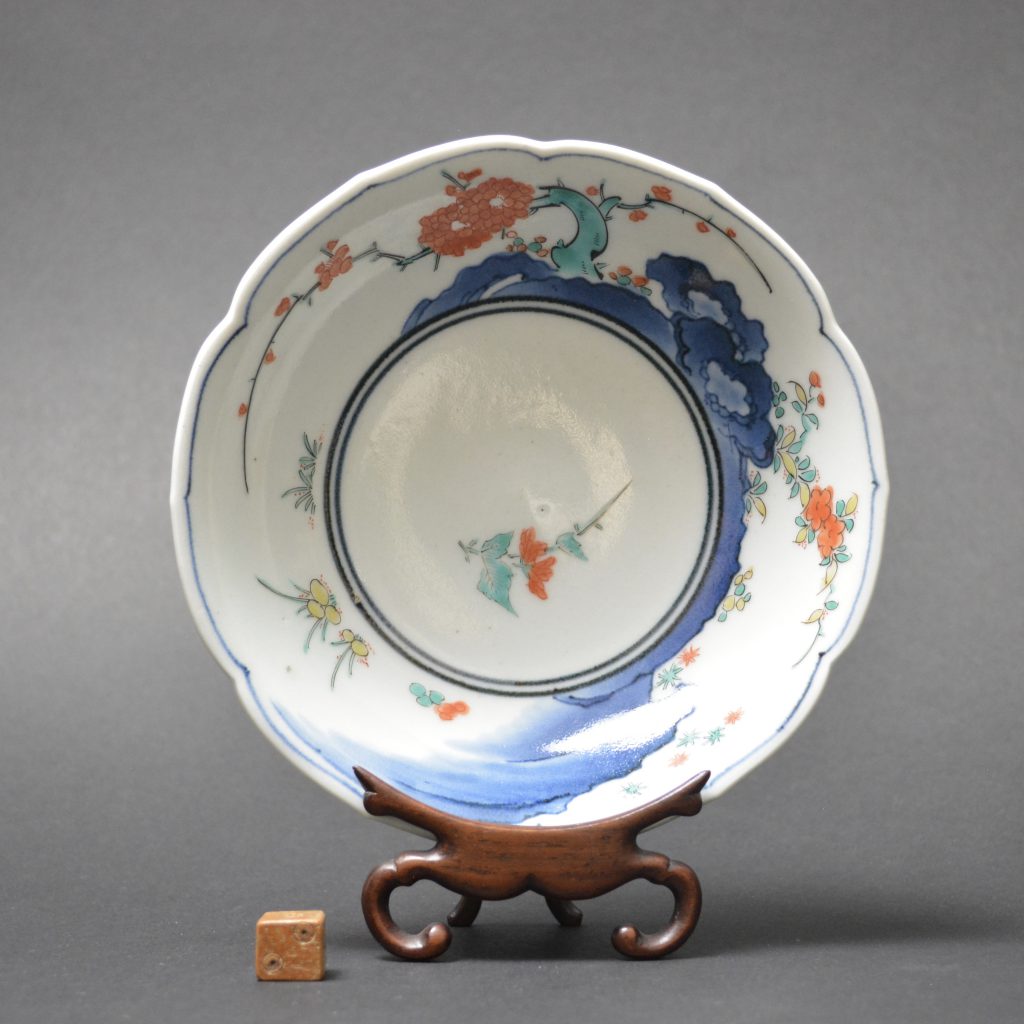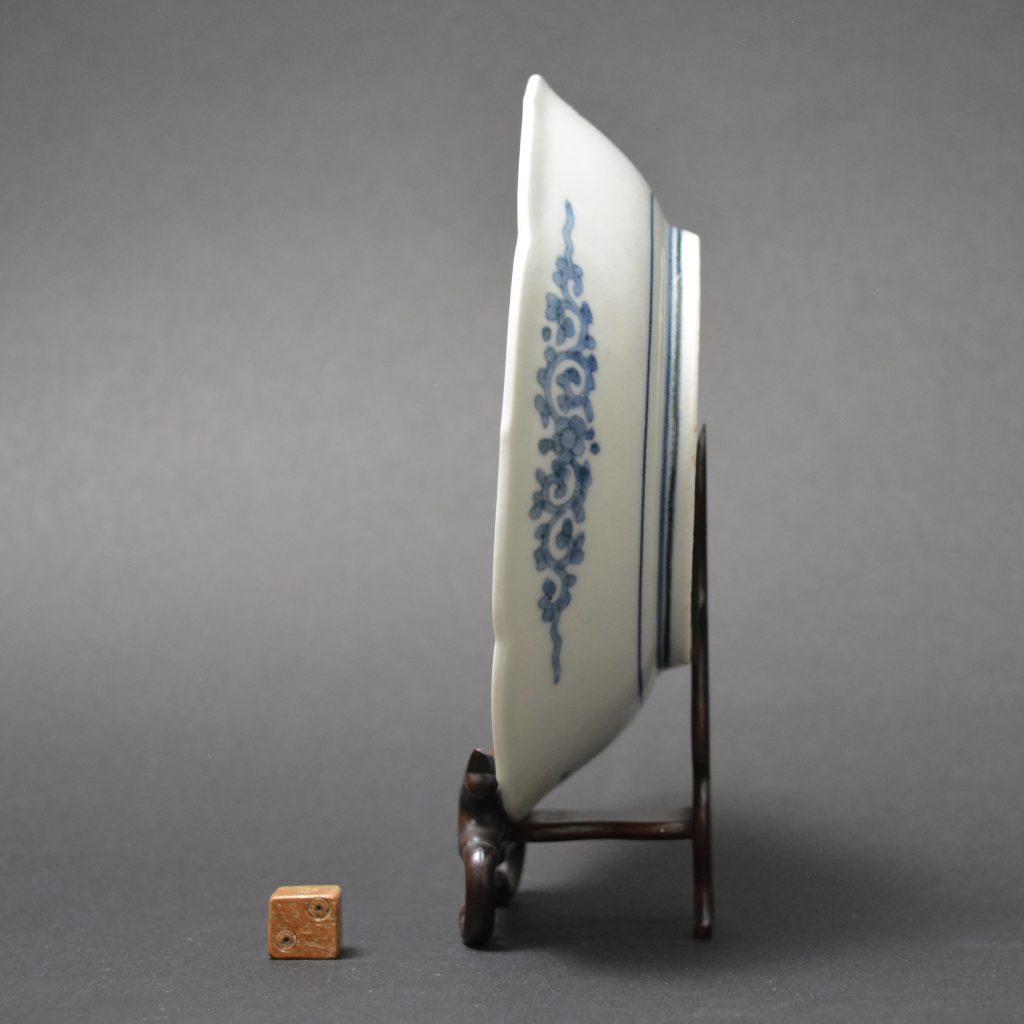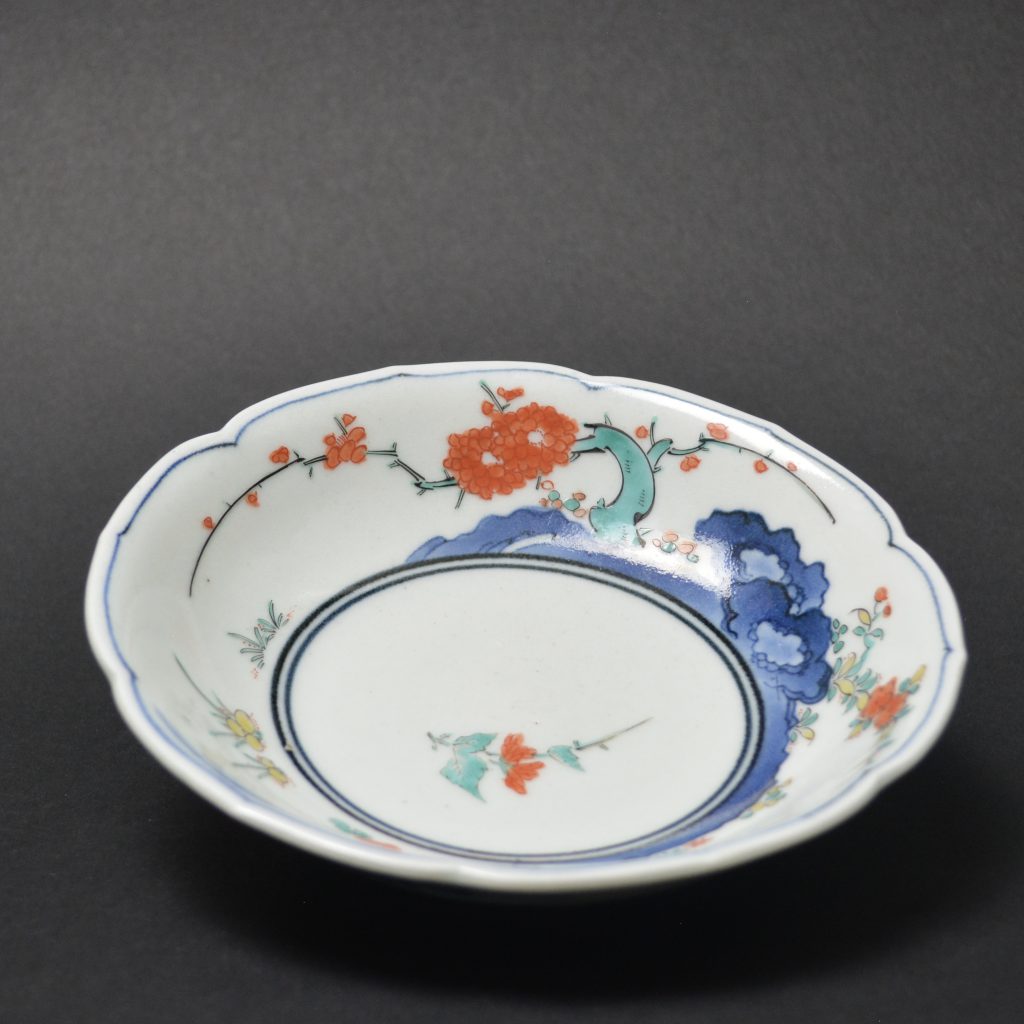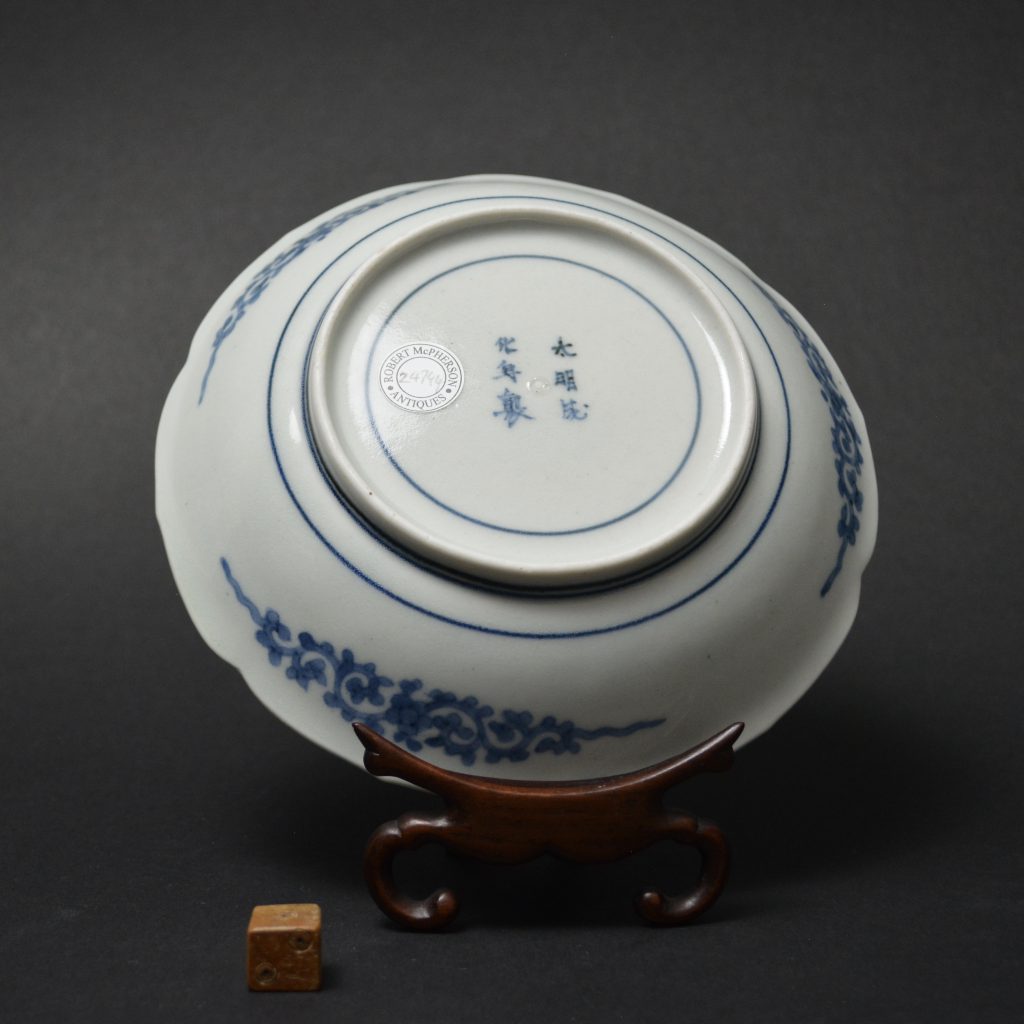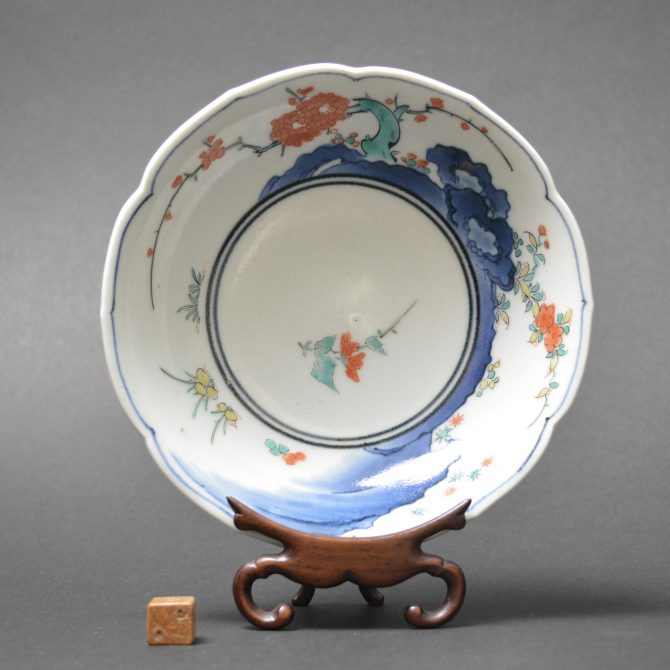
A 17th Century Japanese Kakiemon Porcelain Dish
A Kakiemon Porcelain Dish c.1680 – 1700. This Kakiemon small barbed flower shaped dish uses underglaze cobalt blue for the design to the well of the dish. The cavetto is painted in very varied shades of cobalt blue, ranging from very pale blue to a deep inky blue. It seems that the use of underglaze blue meant that the Nigoshide body of milk white was not used, the glaze is also not as clear as it would be if underglaze blue been, so it has a distinct grey-blue cobalt tint. The enamels are, however, typical of Kakiemon wares of this period. There is a turquoise green, a mustard yellow as well as a rusty looking red. The red is not an enamel but a flat dry pigment. The design of rocky outcrops has a large bent gnarled flowering prunus. Other flowering plants are shown and there also appear to be two turnips growing. The back is decorated with three Karakusa scrolls. The base of the dish has a small six character Chenghua mark (Chenghua 1465-1487, Ming dynasty). In the center of the mark is a small spur-mark (from a firing support).
SOLD
- Condition
- In perfect condition. Firing fault, a minute piece of grit to the front below the blue border.
- Size
- Diameter 14.7 cm (5 ¾ inches)
- Provenance
- N/A
- Stock number
- 25697
Information
Kakiemon Porcelain
Kakiemon decoration is usually of high quality, often delicate and with well-balanced asymmetric designs. The designs were normally quite sparse emphasizing the fine white porcelain body known in Japan as Nigoshide (milky white). The opaque white milky Nigoshide body was used on the finest pieces, it appears that it was reserved for fine quality enamelled decoration. Kakiemon porcelain was decorated with a great variety of imaginative designs which include elements such as the `banded hedge`, `flying squirrel`, and the `Quail and Millet` design. The `Three Friends of Winter` were also a very popular group of designs, other subject taken from nature include flowers (especially the chrysanthemum, the national flower of Japan) as well as birds and rock-work. Figural subjects such as the `Hob in the Well` were also popular. This design illustrates a Chinese folk tale where a sage saves his friend who has fallen into a large fish-bowl by throwing stones at it, braking open the pot. Banded-Hedges were a formal device within Japanese traditional gardens, they were often incorporated in designs, includes `The Three Friends of Winter` (Pine, Bamboo and Prunus). These three plants signify perseverance, as neither the pine nor the bamboo shed their leaves in winter and the plumb (Prunus) flowers at the very end of the winter, heralding the arrival of spring.
